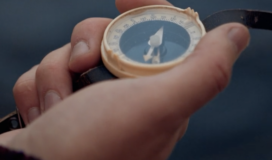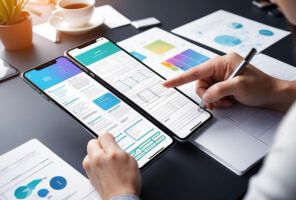Journey Toward the Business Value of Experience: Part 1
Everything is up for reimagination. How we live, how we work, how we shop, and how we interact. At the center of it all are experiences.
The experiences we have with the products and services we use, the technologies that power them and the designs that communicate them. And while the global pandemic thrust technology modernization and innovation to the top of companies’ playbooks, the current onslaught of supply chain constraints, historic labor shortage and tense economic conditions, has successful companies continuing to adapt their playbooks with a focus on long-term planning and growth.
With a focus on long-term growth, more and more leaders are realizing that despite the obvious commercial benefits of having great product and service experiences, only the very best designed experiences stand apart and result in a sharp competitive edge with potential growth in revenues. In fact, a recently published McKinsey report found the market disproportionately rewards companies that truly prioritize design by increasing their revenues and shareholder returns at nearly twice the rate of their industry counterparts.
Experience is everything in today’s market and there’s no signs of a change. But what is the business value of experience, what does the journey look like and what are the challenges you might face along the way?
A Shifting Mindset
A more holistic approach has emerged, one that finds the business value of experiences in the boardroom, on the lips of the C-Suite and as a unifying vision permeating a company’s culture and culminating as a pervasive force across an entire organization. Experience is everyone’s business. It’s a mindset shift from silos and traditional ways of working, toward a relentless focus on the outcomes customers want, with C-Suite leaders measuring and driving the design performance of product experiences with the same tenacity as revenues and costs.
The business value of experience will only continue to gain momentum over the coming years, as more and more leaders pivot to set their companies up for sustained long-term growth.
Successful companies will have the entire organization focused on not just meeting their customers’ needs but also exceeding their expectations with ongoing relevancy and commitment.
Urgency of Experience
Three distinct challenges have given rise and urgency to the business value of experience: customer expectations, commonplace value, and progression from start to scale.
Challenge 1: Meeting Customer Expectations
While many organizations have made wonderful strides toward understanding customer and user needs, around 41% of CEOs believe their organization still has an inability to respond quickly to customer behaviors and expectations. These expectations occur and are set across a market of ever-changing conditions. People remember their peak experiences and how they ended. And as peoples’ experience of connected products and services grows with an expanse of contexts and usages, an amazing experience with one product and service can quickly become a standard expectation for any product and service regardless of industry and market. Expectations are truly at an all time high. Great experiences are the price you pay to play; exceptional experiences are what it takes for you to win.
Challenge 2: Delivering Commonplace Value - And Beyond
People expect on-demand, “at my fingertips,” meaningful, simple, and intuitive experiences that can be accessed anytime, anywhere. These are fundamental and essential for any digital product to succeed. You must get it right.
While many companies have made progress at nailing the fundamentals, many still struggle to get their enterprise product suite up to this level of standard and then push beyond to offer truly exceptional user experiences. This is often due to several reasons, which may include a small or complete lack of an in-house UX and product design team, lack of aligned cross-functional teams, a struggle to know how to acquire and get at the understanding of the “why” behind user and customer behaviors, as well as the lack of technology stack upgrades and integrations. In McKinsey’s 2018 report on the business value of design, their survey of 300 global companies found that 98% of respondents aligned on their greatest weaknesses, including but not limited to: employing design metrics at the C-Suite level, integrating user, business, competitor, and technological research, starting with the user instead of the spec, and integrating with third-party products and services. Getting your fundamentals right can be a meaningful step forward and can be tied to modernization initiatives. Think of commonplace value as the fundamentals you need to put in place to have a solid foundation upon which to scale.
Challenge 3: Progressing from Start to Scale
Often, companies simply don’t know where to begin. Or perhaps they started strong but momentum stalled because of problems with scale. Many companies that have grown to be customer obsessed are still experiencing unbalanced efforts, despite mild success through prioritizing customer experience (CX). While a CX focused team may measure, synthesize, and respond to customer data there is often a lack of cross-functional convening that would further enrich the process by applying user-centered design processes with a UX team. When this design process is not infused, holistically, into your approach, it becomes critically difficult to successfully meet customer needs and expectations.
When user-centered design is infused into an organization, teams can collectively clarify problem spaces, define the right opportunities to pursue, ideate and prioritize, and design prototypes that enable them to customer validate solutions prior to their build and release. These methods provide deeper insights that helps you connect with users across all their journeys and touchpoints in a seamless, end-to-end experience. How your company delivers is just as important as what it delivers. And a potentially great product experience will fall short when teams don't design and measure the entire experience.
In the second part of this series, we'll look at the journey for solving these challenges, using Experience Modernization, Operations, Performance and Innovation.



